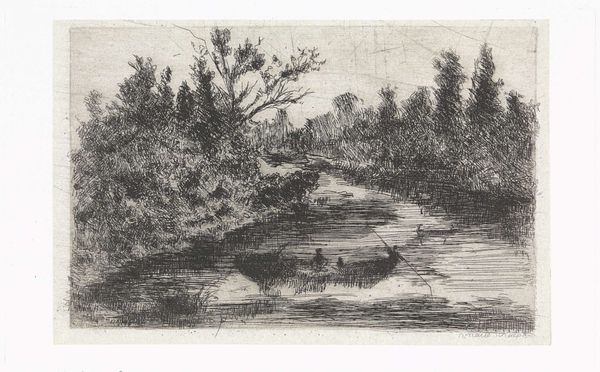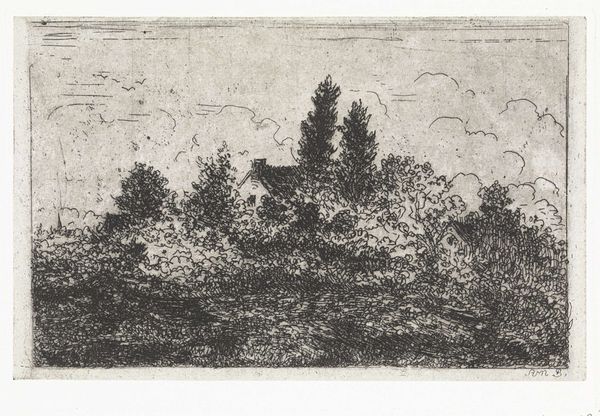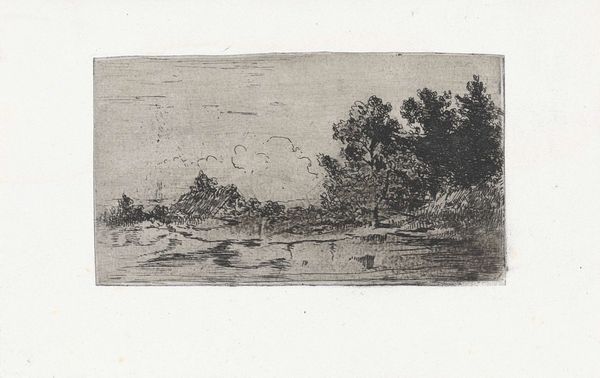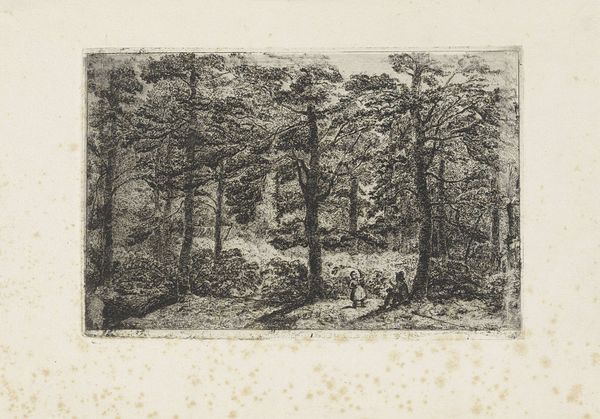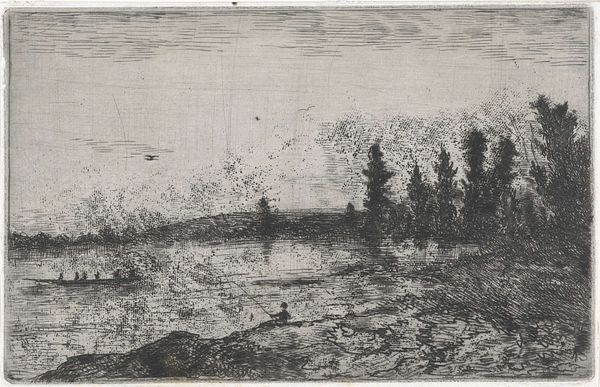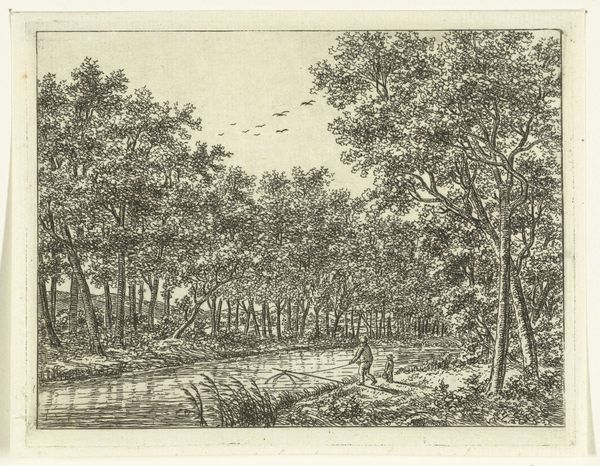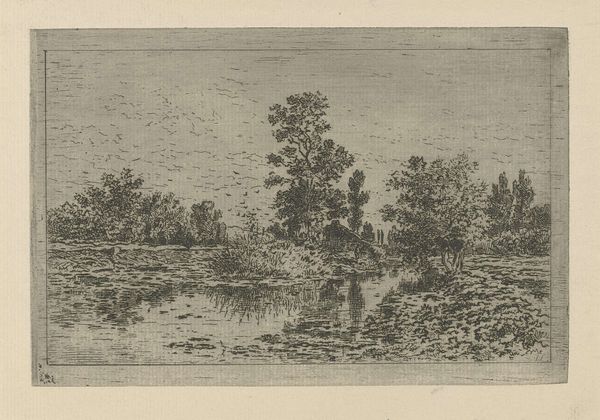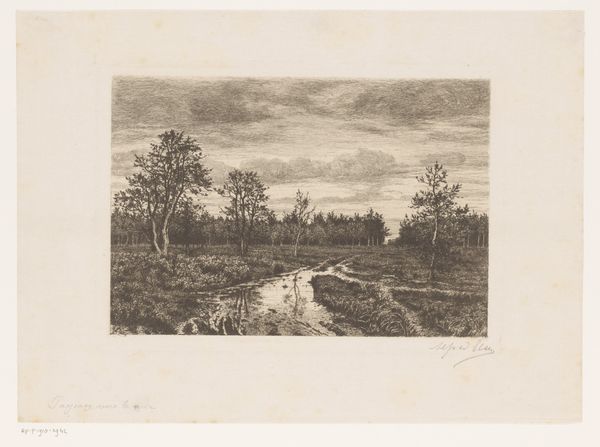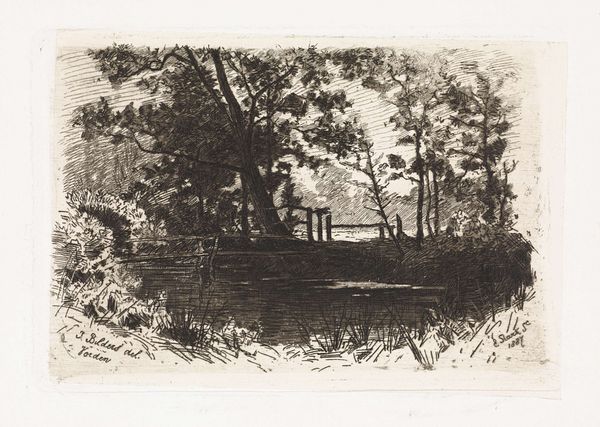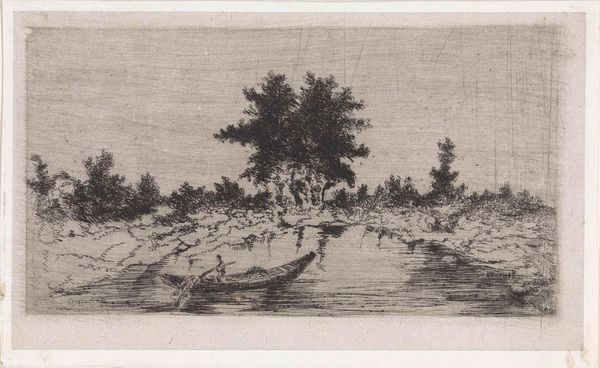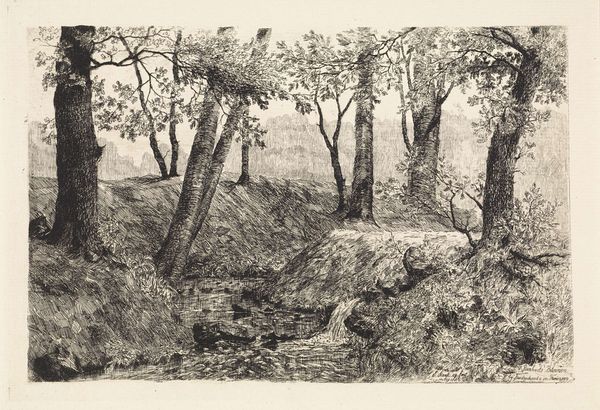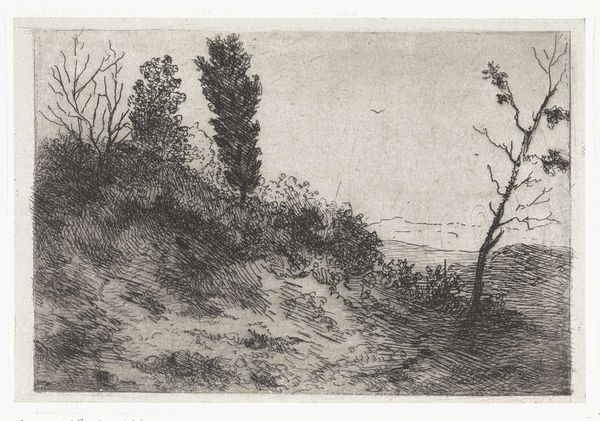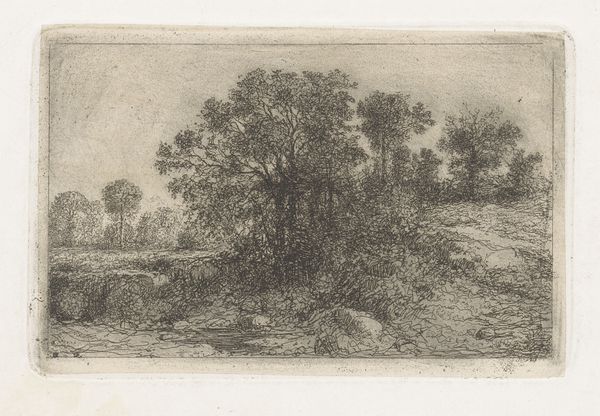
drawing, print, etching
#
drawing
# print
#
etching
#
landscape
#
realism
Dimensions: height 125 mm, width 196 mm
Copyright: Rijks Museum: Open Domain
Editor: We’re looking at "Poel met eenden," or "Pond with Ducks," an etching by Arnoud Schaepkens, created sometime between 1831 and 1888. The texture created by the etching process gives the whole scene a somber, almost blurry quality. What compositional elements stand out to you? Curator: What strikes me is the density of the marks. Notice how Schaepkens builds up the forms of the trees and foliage in the background with short, hatched lines. There’s a clear differentiation in texture between the dense vegetation and the relative smoothness of the pond, achieved through variations in line density and direction. Does this variance change your initial perspective on the overall mood of the scene? Editor: It does. I now observe a contrast rather than solely a somber blur. The pond's relative calm, achieved through simpler lines, offers a visual respite from the textured density of the trees. But isn’t there also a sort of balance in the overall composition itself? The tree-line taking the top half, the pond, the lower. Curator: Indeed, consider how the artist uses the verticality of the trees to contrast with the horizontal expanse of the pond. The strategic placement of the ducks also functions as a counterpoint, disrupting what might otherwise be an overly rigid horizontal plane. The reflections of light off the water’s surface are critical in opening that darker lower half, as well. Editor: That’s a great point. The strategic balance emphasizes that regardless of a primary mood, counter-moods also subtly exist, that play against a simplistic reading of the art. I'm much more appreciative of the depth in what at first appeared simple. Curator: I agree; a purely formal approach reminds us of the interplay within a single piece and is far from unidimensional, indeed.
Comments
No comments
Be the first to comment and join the conversation on the ultimate creative platform.
